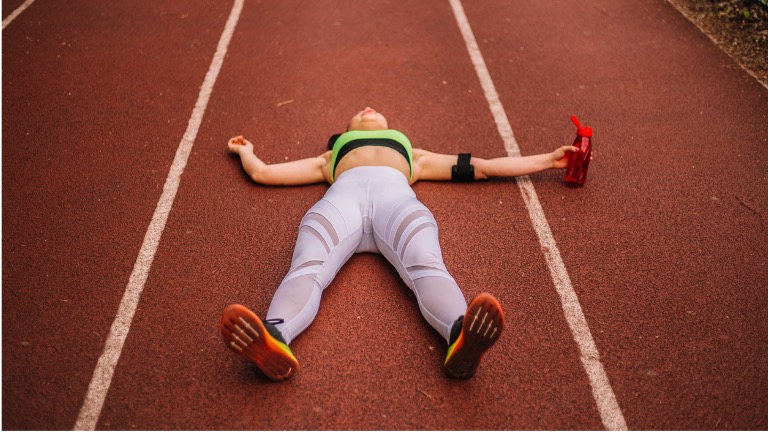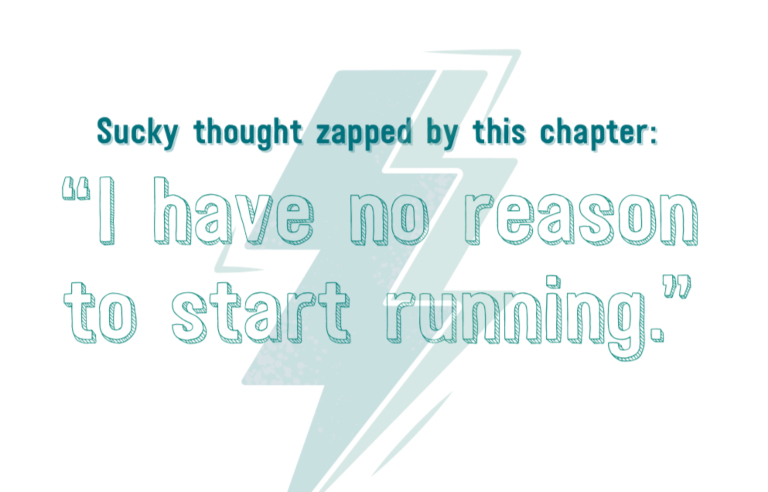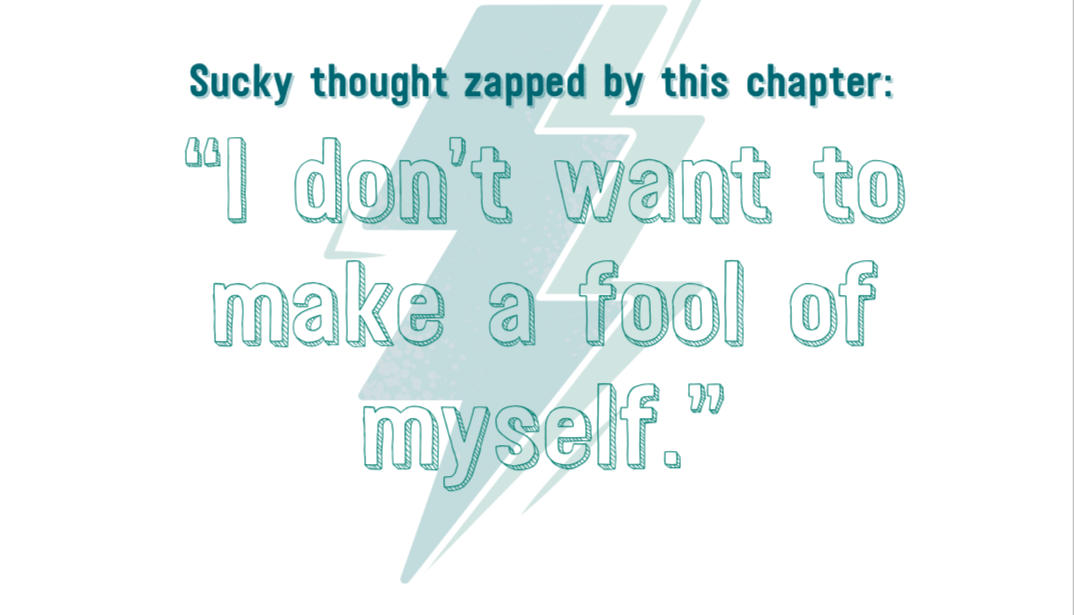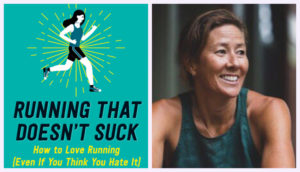‘How to run’ is probably not something you Google if you hate running. Serena Dwyer Jones dreaded the thought, then a new book helped
Iiiiiiii hate running. I hate it. As far as I’m concerned there’s only two types of running: running out of food and running away from your problems.
As an ex-fat kid, it’s a touchy subject for me. The R-word has probably filled me with dread from the moment I took my first steps. ‘She’ll be running soon’. I suspect that would have been met with my very first word: ‘No’.
I was the kid you didn’t want on your team on sports day. The girl who would squander a head start with her ineptitude. Remember ‘it’ (or ‘tag’ as the Americans call it)? Yeah, if you played with her, the game was over the moment you tapped her shoulder. She was never going to catch you.
The legs work, the blood is flowing but speed and I have never made so much as an acquaintance. I’m more of an insouciant saunterer. If you’re like me, your happy place is a nice long walk into town on a summer’s day or a casual bike ride through the park after work. Emphasis on the word casual.
Then along comes Lisa Jhung’s new book, Running That Doesn’t Suck: How to Love Running (Even If You Think You Hate It).
While I loathe to admit it, seeing it cross my desk at Healthista HQ gave a glimmer of hope. Half of me went in wanting to say yes to everything. But another part of me, ever the know-it-all, also went in somewhat stubbornly determined to prove her wrong. (It can’t be helped, I’m a Taurus.)
What I wasn’t prepared for was Jhung’s approach to the subject which, to me at least, was something entirely new. Running doesn’t have to be a race. Instead, she encourages us to recapture our child-like enthusiasm for running. At the start of the book she asks us:
‘What if your main reason for running was how it made you feel instead of how you look?’
What a peculiar idea. I kinda like it.
According to Jhung, we need to look at how we look as ‘the gravy’ or the icing on the cake. I should prepare myself to look awesome, especially below the chest, but not let that be the meat of the matter as it were.
Running promised to strengthen my shins, which in turn will lead to better balance and co-ordination, something my dyspraxic self is in dire need of. Dyspraxia is a neurological disorder that causes trouble with co-ordination and spatial awareness (and not making a fool of yourself when dancing in public).
It also promised an increase in endorphins.
Sure, I’d heard of ‘endorphins’ before. (They’re the thing you get when your worst enemy falls down the stairs right?) but in this context, how do they actually work?
During a ‘runner’s high’ endorphins work as a sort of natural painkiller, their presence reduces stress and pain: ‘The more endorphins released the better the runner feels’.
As someone who falls into the lane of novice, I was encouraged to work my way to up a 30-minute run – the magic number that would unlock my natural endorphins.
Where to start: as a ‘never ever’ runner
‘Diving into a generic plan can make it, well suck,’ says Jhung
I’m what the book classifies as a ‘never-ever’ runner, which means that I have never called myself a runner and am ‘starting from square one’. As a never ever runner, I have the freedom to slooooowly ease my way in with only 2-3 runs per week. Easy enough. My first week should look like this:
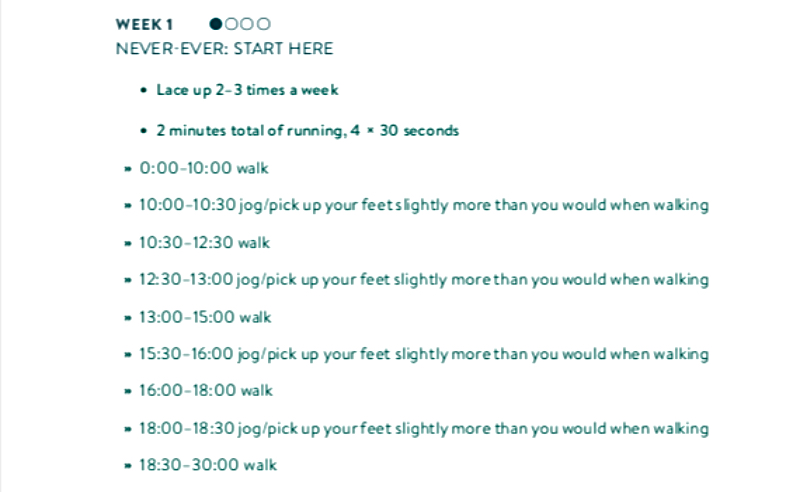
The book gives you 10 weeks worth of running instructions to work off of. After about 10 weeks, I guess I will have levelled up to an actual runner. But we were not quite there yet.
Two types of running
Before I got started, I had a choice to make. What sort of experience would I be chasing? Jhung, breaks it down into two main types: mindful and mindless.
Mindful running is all about being in the moment, letting your thoughts quiet and focusing on your body: your breathing, what you can hear, what you’re feeling…all of that. It’s best achieved by focusing on your senses while you run. ‘The point is to be present,’ she says.
Mindless running is essentially the opposite. You let your mind wander all it likes. Blast your best Beyoncé playlist and get lost in your fitness fantasy. It is best achieved by basically embracing the madness, as long as that madness gets you out the door. What’s not to love?
Although I got the impression that mindful running would yield speedier results, I found the idea of mindless running far more appealing. I had to be real with myself and select the option that I would be more likely to do.
The book also advised me on to marry these two techniques: by playing music I was very familiar with that didn’t have any words. So, I loaded up my playlist with some contemporary classical music and of course the scores to all my favourite old Disney movies (I found the track where Simba is running back to the pride lands to be especially motivating – it’s called ‘Busa’ if you’re wondering).
What you need
Gear has two upsides: motivating you to use it and ‘making running suck a lot less,’ in Jhung’s words.
In terms of gear, I was a little excited about this. Retail therapy is one of my oldest and most refined practices. It combines two of my favourite things, style and research. I’m a shameless lunatic when it comes to finding my perfect match. If shopping was a sport, it would be MY sport. (Why isn’t shopping a sport?)
The only downside? I didn’t have much of a budget to work with. So I decided to keep it simple.
The obvious go-to was the footwear, which Jhung kindly starts with. I was planning on experimenting with two types of running – running to a destination and running in a park. I needed shoes that fit these needs so I decided to bite the bullet and invest in two different types: trail shoes and road shoes.
Next up, my main concerns were a sports bra and what bottoms to wear, after all, I’d be bringing my phone with me (not only for music, but for safety).
After scouring the section relating to apparel, I decided to invest in some compression leggings (with pockets for my phone) to help with blood flow. Worst case scenario, I just got myself some really nice cycling leggings. I also got myself a simple sports bra from M&S, because you can’t really go wrong with M&S (also there was one near the office).
How to make it fun
As it turns out, there were plenty of things to look forward to about running that I had never even considered. I’d already gotten a nice little high from indulging in my shopping addiction, but there’s so much more.
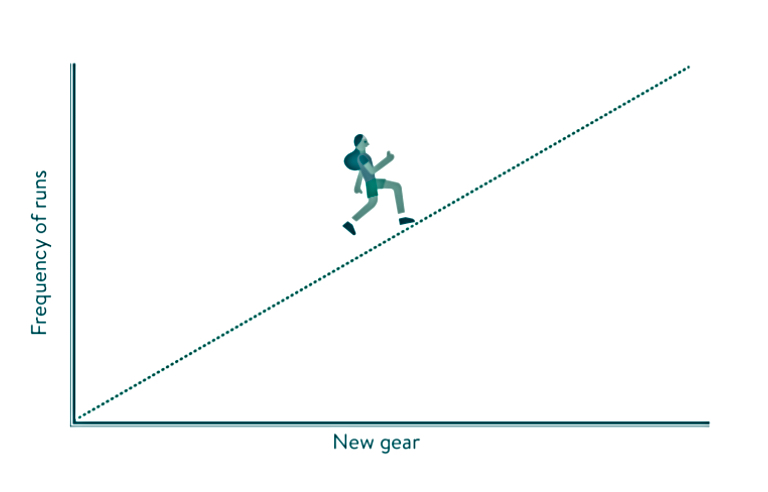
A part of the journey towards becoming a runner includes visualising the ‘new you’. This is probably a thing that I’ve done a thousand times. This idealised version of myself has a body cut from glass, the elegance of a flowing stream and the confidence of Jennifer Lewis.
But ‘Running That Doesn’t Suck’ had me thinking more about what I actually have to work with. What does the first step look like without ‘the gravy‘? For me, progress would be something as simple as upping my endurance and strengthening my lower body. Once you get into the swing of things, you actually get to see your progress. That sounds pretty exciting to me.
Learning to discover new environments is a skill that can benefit anyone, regardless of their goals. All of a sudden, I’m looking at the world a little differently. If I see a pathway I want to explore, I go for it. Perhaps I’ll make it a running destination later…
My ‘first’ run
A good few pages in the book include some information on picking the ideal time for you. Are you a morning runner, a midday runner or an evening runner?
My brain doesn’t even exist until my midday coffee, so I was fairly certain that an evening run would be the way to go. I don’t know if you’ve noticed recently, but London has been boiling, and I say that as someone who considers 18 degrees to be chilly. An evening run then, had the added appeal of being the most logical option, as the temperature tends to drop around then. (Plus, I would have the added bonus of being obscured by darkness.)
I set off out of the door at about 7.30 and walked to my local park. According to my ‘Never Ever’ instructions, I’d only be doing about two minutes of actual running, with the rest being short walking intervals.
So, this walk to the park was technically all part of the process. It was honestly no different from one of my much beloved strolls, though I tried to walk with a bit of urgency and purpose leading up into my jog.
Music was a huge help, it kept my spirits high (I probably looked a bit mad, laughing to myself when the Lion King music came on) and as an added bonus, I could use the length of a song to measure time without breaking my flow or having to cancel a timer.
The jogging itself was fine. I guess you could say it didn’t suck one bit. Even though it wasn’t quite running. The whole thing reminded me a little of High Intensity Interval Training (HIIT) but without the sense of dread.
How to keep it fun
Jhung cautions against trekking the same path over and over and I couldn’t agree more. While I like a good routine, familiarity certainly breeds contempt. It’s very early days, but having a couple of alternates available to me has kept me away from fatigue so far.
Embracing your inner explorer is another excellent way to keep that child-like enjoyment going. However, as a (debatably) sweet, tiny and (ahem) delicate woman, I was a little wary of running through new areas that I had little experience of.
‘Get your hands on some maps of your neighbourhood and/or nearby open space,‘ says Jhung. ‘Maps are like portals to new running adventures.’
I decided to take two approaches towards new running environments:
1- Explore them in a non-running capacity a few times beforehand so that I knew I would be comfortable with them.
2- Do as the next chapter suggested and look into finding a running partner
Running mates
‘A group or partner environment naturally makes you push yourself,’ Jhung asserts.
Another tool in your running belt can be getting another person involved or even joining a whole group.
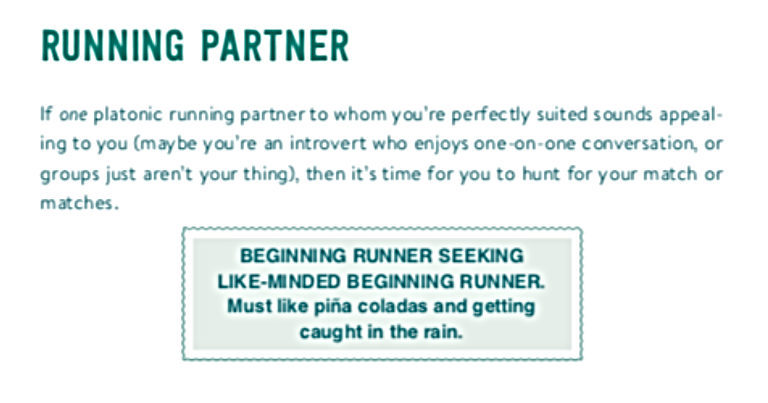
I felt like my first few runs should be solo outings. After all, a large part of why I’ve always hated running is the judgemental nature that surrounds it. What if I joined a running group and they all laughed at how slow I was? What if I fell behind and they just left me, or worse, started to lap me!?
After my first few runs, I was fairly certain that while I didn’t want to surround myself with people, the distraction of another person would be a good way to keep a more familiar path fresh. Plus, if I’m running three times a week (okay, just two for now, but I was trying out some optimism) I’ve still got other days to fall back on if I don’t enjoy it. I’ve asked an acquaintance who frequents my local coffee shop.
The book also suggests a four legged companion for your runs. I would love this, I would love this so much, but my tiny garden-less flat will not allow it. Something I would love to try in the future though is dog sitting, so perhaps this would be a perfect compromise.
Runner code
‘The easiest way to avoid sounding like a d-bag is don’t talk about running unless you’re asked,’ says Jhung.
Jhung is kind enough to outline a couple of social faux pas that newer runners are prone to making in order to minimise your embarrassment. For instance, new runners who are excited about their new lifestyle can come across as a little braggadocious. It’s best not to talk about your running unless you’re directly asked about it.
Another useful tip is knowing when to keep your headphones at home. For instance, if you’ll be jogging alongside a bicycle lane it’s best to keep your ears open for safety. There’s also an amusingly helpful section about how to deal with your bodily functions appropriately. Spoiler alert: Making people wait for you to poop is not considered cool.
To race or not to race?
‘You do not have to race to call yourself a runner,’ says Jhung. And thank God for that.
I’d love nothing more than to tell you this story ends with me signing up for the marathon. There’s an excellent section in the book that breaks it all down for novices like me.
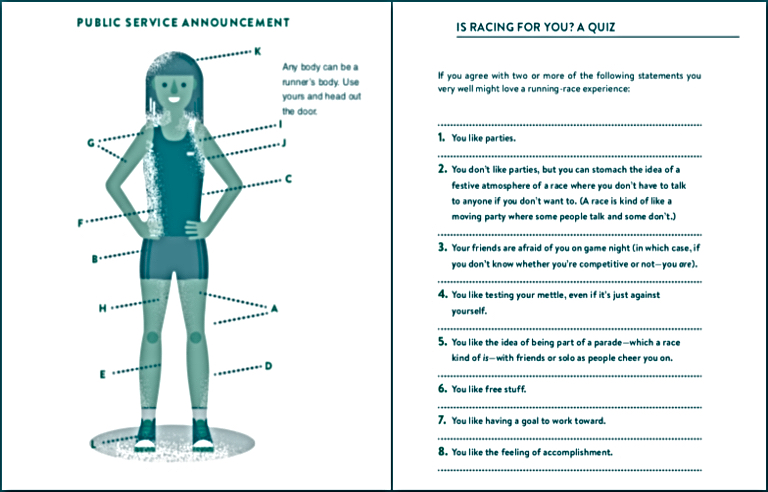
But the fact of the matter is, this journey is still going. The book definitely gave me a different outlook on what running could and should be.
Jhung doesn’t promise that running will turn you into a euphoric gym bunny with a space-hopper bum and an encyclopaedic understanding of the avocado. She says it won’t suck. And it didn’t.
At no point did I feel talked down to or foolish, the whole tone is very friendly and you truly get the sense that Jhung is on your side. This is a passion of hers and she wants to share it, not chastise you for doing life wrong. It’s honestly Jhungs attitude that got me through.
I don’t have to be fast, I don’t have to be ‘fit’. I can just be happy. (And I didn’t even have to leave a banana peel at the top of a staircase…)
Lisa Jhung is a writer, editor and author who thrives on bringing to life the sports she loves. She has been published in countless of magazines over the past decade and a half, but here are a few: Backpacker, Competitor, Cosmo, Details, Fitness, Men’s Health, Men’s Journal, Mental Floss, Mountain, Outside, Outside Buyer’s Guide, Runner’s World, Shape, and more.
At the time of this articles publication she has written two books: “Running That Doesn’t Suck: How To Love Running (Even If You Think You Hate It)” (2019), and “Trailhead: The Dirt on All Things Trail Running,” (2015).
Relevant Healthista Content:
5 easy dinner ideas from TV chef Gregg Wallace’s new Italian cookbook
The 5-minute running warm-up to keep injuries at bay
Running for fitness – 5 tips these running experts want you to know
Healthista content you might like:
How this gorgeous opera singer stays fit for stage
Like this article? Sign up to our newsletter to get more articles like this delivered straight to your inbox.



